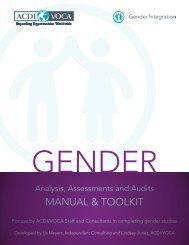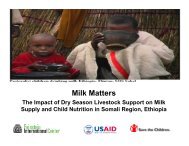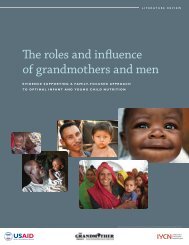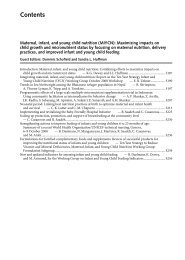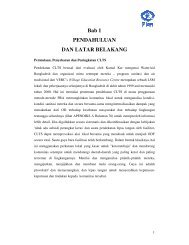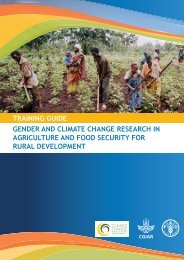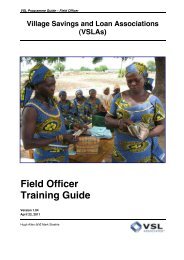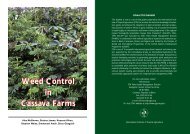Harmonising Climate Risk Management - International Institute for ...
Harmonising Climate Risk Management - International Institute for ...
Harmonising Climate Risk Management - International Institute for ...
- No tags were found...
You also want an ePaper? Increase the reach of your titles
YUMPU automatically turns print PDFs into web optimized ePapers that Google loves.
ENV/WKP(2011)6EXECUTIVE SUMMARYThe need to tackle the risks posed by the impacts of climate change to poverty reduction goals hasunderpinned a burgeoning range of tools to integrate adaptation into development co-operation.Development planners and project managers have used a wide variety of tools to manage a broad range ofenvironmental risks, including those posed by climate variability <strong>for</strong> a long time. Some of these tools havealso now been modified to take into account the risks posed by climate change. At the same time, there hasbeen a recent emphasis on developing more dedicated tools which have an explicit focus on screening <strong>for</strong>climate change risks and on facilitating adaptation. It is this set of more targeted tools that are the focus ofthe present report. The analysis and its findings should there<strong>for</strong>e be viewed within this specific context.Stock-taking and workshops have considered similarities of these tools, focusing primarily ondescriptions of the tool methodologies. However, with increasing experience in the development andimplementation of these tools, the experiences of both users and developers should be considered toinvestigate the extent to which tools are meeting user needs and if opportunities exist <strong>for</strong> streamlining thetools landscape. This analysis is an ef<strong>for</strong>t to contribute to the alignment and harmonisation priorities of theParis Declaration on Aid Effectiveness of March 2005 and the follow-up Accra Agenda <strong>for</strong> Action ofSeptember 2008. While a “one-size-fits-all” approach may not be appropriate, there may be opportunitiesto provide common guidance on specific topics and to clarify the diverse terminology.Adaptation tools can assist users in raising awareness, identifying current and future vulnerability andclimate risks, assessing and selecting adaptation options, and evaluating the success of adaptation. Thispaper categorises adaptation tools based on their principal functions: (i) Type 1 – Process guidance tools,which guide users through one or several steps of processes; (ii) Type 2 – Data and in<strong>for</strong>mationprovision tools, which generate or present in<strong>for</strong>mation <strong>for</strong> use in other steps; and (iii) Type 3 –Knowledge-sharing tools, which allow users to share knowledge and experiences that will in<strong>for</strong>m andrefine adaptation. The analysis focuses on a sample of Type 1 tools, which include both screening andassessment tools. Screening is undertaken to establish relevance to climate change and justify furtherexamination of climate risks, whereas assessment is a detailed examination of the nature of climate riskand of possible risk management strategies.<strong>Climate</strong> risk screening tools are increasingly being incorporated into mandatory donor processes butremain voluntary in Non-Governmental Organisations (NGOs). The general difference in approachbetween donors and NGOs mirrors a dichotomy between a more top-down approach emphasisingin<strong>for</strong>mation about future climate as a basis <strong>for</strong> devising adaptation options and a bottom-up approachcentred on strategies to cope with current climate variability. However, ef<strong>for</strong>ts are being made to develophybrid approaches to adaptation, which draw from multiple climate data sources and try to reconciledifferent climate risk management approaches. This paper draws on interviews and documentary sourcesfrom a representative sample of tools and approaches from both donor agencies and international NGOs. Itprovides an analysis of practical experiences in order to stimulate dialogue on tools among thedevelopment community.Screening processes are found to be similar in scope and focus across the agencies analysed. Theyprovide significant potential <strong>for</strong> a common generic approach that considers the sensitivity of projectactivities to variations in climate, the geographic exposure, and the baseline adaptive capacity. Assessmentprocesses demonstrate greater variety, but show consistency in their detailed examinations of climate10



